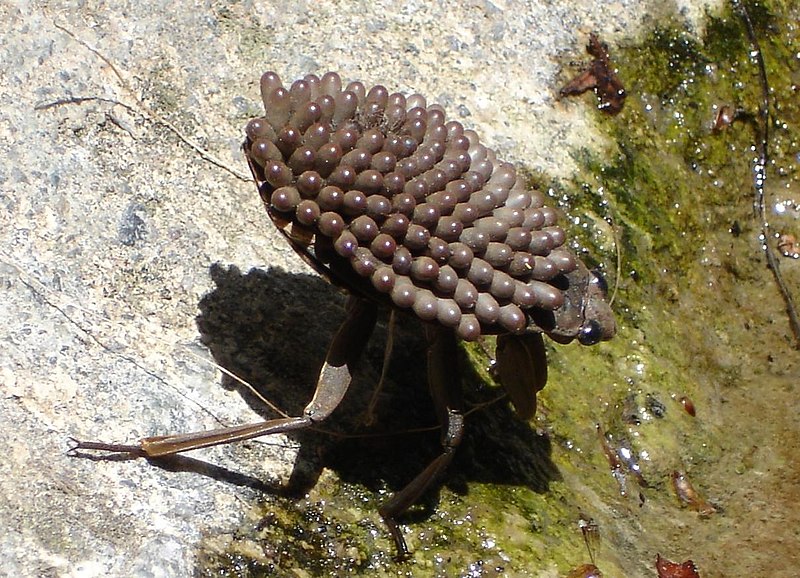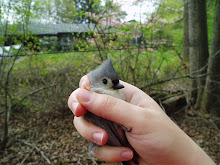Let's get back to bugs, eh?
Today's subject happens to be the topic for my insect behavior class tomorrow: the giant water bugs.
Things you should know about the giant water bug:
- There are several genera that are referred to as "giant water bugs."
- Really not kidding about that "giant" part, some can be almost five inches long! (Oh, and they fly!)
- They have one of the most painful bites out of all the insects. (Rated on a different scale from hymenopteran stings, however.)
- They're true bugs (order Hemiptera) and as such have cool sucking mouthparts. They're predators and inject digestive enzymes into their prey to liquefy them, and then suck out the contents like soup.
- They really earn the #1 DAD mug every year.
Giant water bugs in the genus Abedus are one of the few insects that demonstrate paternal parental care. (Say that five times fast!) After repeated matings (to assure paternity), the female lays her eggs on the back of the male who fertilized them.

He takes care of them for a fortnight or so, even though they may weigh up to four times more than he does. He makes sure they get enough oxygen by "brood pumping", which is to say that he rocks forward and backward to move them through the water. Eventually, towards the end of their development, they encumber his breathing apparatus to the point that he needs to park himself on a plant and stay close to the surface until they hatch.
Furthermore, mama water bugs and unencumbered males will eat any first instar (just after hatching) nymphs that they can get their grasping appendages on, but dads brooding eggs will not eat nymphs. It's not all bad-parent good-parent though; if times are tough, the male will remove the eggs from his back and eat them before moving on to find a better habitat. Mm, embryo-licious!
I hope you've enjoyed these installments of "Better Know an Insect (or Other Arthropod)." I think I'll keep doing them, because they're really fun! I'll probably cut down to once a week or so from now on, but I will keep the series going. Thanks for reading!
PS: You'd probably love to know what my sources are, wouldn't you? Click this link to a Google search for the genus and the author, and prepare to immerse yourself (ha!) in water bug literature. The papers I read today are:
- Smith, R. L., 1976. Male brooding behavior of the water bug Abedus herberti. Annals of the Entomological Society of America 69:740-747.
- Smith, R. L., 1979. Paternity assurance and altered roles in the mating behavior of a giant water bug, Abedus herberti. Animal Behaviour 27:716-725.
- Smith, R. L., 1979. Repeated copulation and sperm precedence: paternity assurance for a male brooding water bug. Science 205:1027-1031.




No comments:
Post a Comment